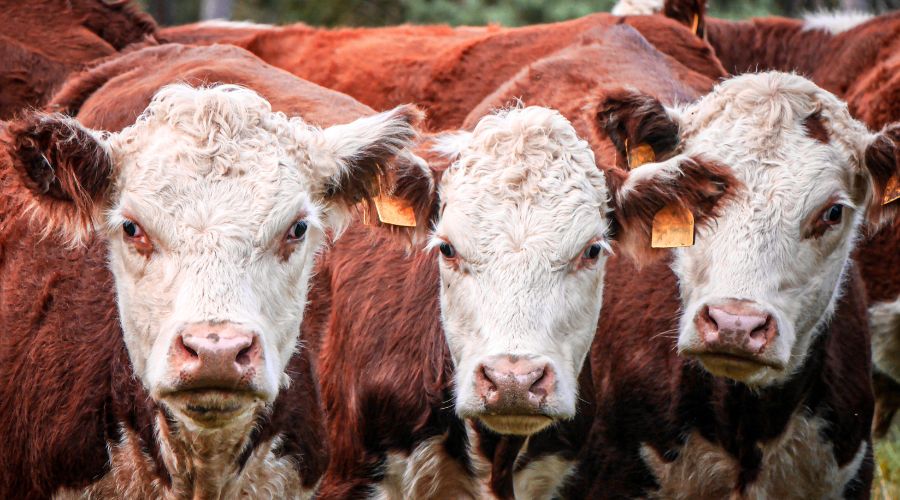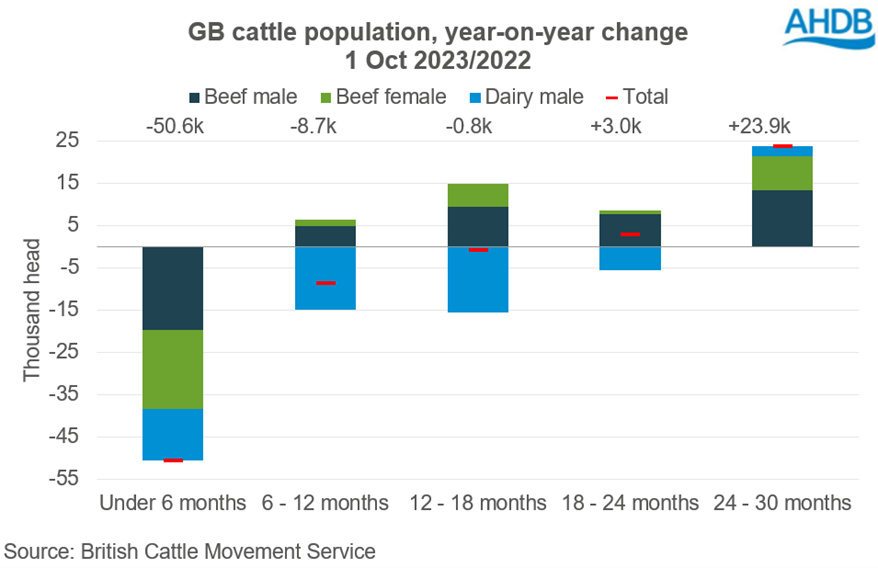UK cattle population marks a drop with fewer youngstock ready for beef production
5th January 2025
The UK cattle population has dropped again last year, with 2023 marking the greatest decline in female beef breeding-age animals seen in over 10 years.

According to Defra livestock population data, the UK cattle herd stood at 9.6 million head as of 1st June, a year-on-year drop of 0.8% (76,500 head).
AHDB has explained that the breeding herd accounts for around a third of the total and has seen a YOY decline of 1.9% to 3.2 million head in 2023, with the steepest YOY decline in numbers seen in Scotland (-2.4%).
The contraction of the UK breeding herd continues to be primarily driven by the suckler herd. From 1st June 2022 to 2023, beef cow numbers fell by 3.8% to 1.4 million animals, being the greatest annual decline seen in over 10 years.
This contraction continues the ongoing trend in the suckler herd, with the herd 203,800 head (-13%) smaller versus 10 years ago.
Meanwhile, overall dairy cow numbers showed little YOY change, sitting at 1.8 million head, down 0.3% versus 2022. Consequently, the dairy herd accounts for a growing share of the UK breeding herd, at 57% as of 1st June 2023.
Positively, the growth of the dairy herds in Northern Ireland and Scotland continues, outweighing the decline in England and Wales, AHDB added.
Contraction in the English dairy herd follows the long-term trend, while Welsh contraction comes after a couple of years of growth.
Uplifts and declines
British Cattle Movement Service data from 1st October shows a more recent view of the number of prime cattle (dairy males, beef males and females aged 12-30 months) available for beef production in Great Britain.
Numbers grew by 1.3% against October 2022, sitting at 1.99 million head. This rise was largely driven by cattle aged 24-30 months, up by 6.9% year-on-year. Uplift was seen in all categories, but beef males drove most of the growth, up by 12% (13,369 head) YOY.

Meanwhile, the greatest decline was seen in cattle under six months old, falling by 50,600 head (-4.3%). This occurred unanimously across categories, and follows trends from previous analysis of calf registrations.
AHDB explained that a larger population of 12–30-month-old cattle at 1st October on paper would suggest supplies may be supported into the early months of 2024.
“However, last year’s forage pressures, persistent high feed costs, and industry reports of cattle coming forward generally leaner this year have likely played into finishing times.
“Indeed, average carcase weights have been persistently lighter through 2023. Looking at current youngstock levels and calf registrations in 2023, supplies may begin to tighten heading towards 2025,” an AHDB spokesperson concluded.
Read more livestock news.
